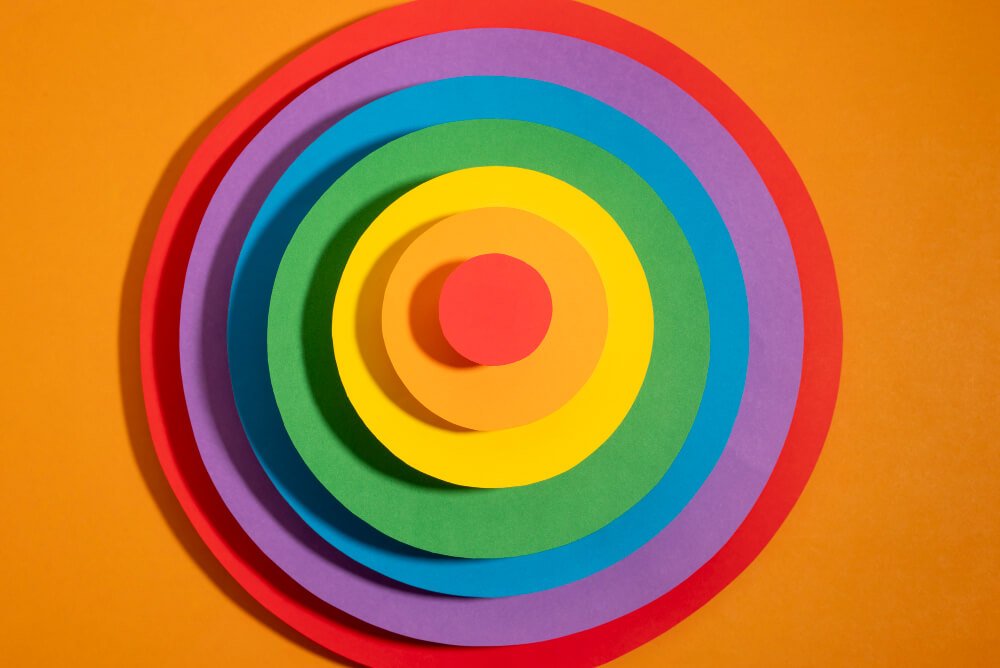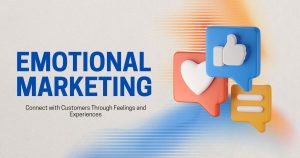The Emotional Power of Color in Marketing

How does emotion play into color in marketing?
Why do some brands inspire joy or trust or excitement the second their logo pops up on our screens? The answer often rests with the subtle, but powerful, force of color. Whether it’s the vibrant yellow that makes the big sandy felt of Macca’s feel sunny or the calming blue of Facebook that encourages trust, colour has a powerful impact on the way we view brands. Strategically, color is a silent language that relates to us at a sub-conscious emotional level, impacts decisions, and builds strong brand recognition.
If you’re a marketer, business owner, or designer, using the emotional and psychological effects of color to your advantage is the key to taking your campaigns to the next level, making your branding work harder for you, and reinforcing your message. Let’s dive into the interesting relationship between emotion and color in marketing, from color psychology to action items.
Understanding Color Psychology
Simply put, color psychology is the study of how colors impact human behavior and emotions. This domain shows us that color is much more than a visual element; it is a powerful instrument that can elicit certain feelings, attitudes and even actions.
How Colors Affect Human Behavior
Research has shown that certain colors consistently evoke universal psychological responses. For example:
- Red can raise your heart rate, stimulate appetite, and create urgency, which is why it’s often used in fast-food branding or clearance sales.
- Blue is associated with calm, trust, and stability. Many financial institutions use it to establish reliability (e.g., PayPal and American Express).
- Yellow conveys optimism, but when overused, it can also signal caution (think warning signs and school buses).
These emotional reactions aren’t accidental. They are deeply rooted in how our brains process visual cues and connect them to memories and associations.
A Note on Cultural Nuances
While studies suggest some color associations are universal, cultural interpretations often vary. For instance:
- White is a symbol of purity and simplicity in Western cultures, yet it signifies mourning in parts of East Asia.
- Red is a color of love and passion globally but is also considered lucky and celebratory in Chinese culture.
Marketers entering international markets need to stay sensitive to these cultural contexts to create campaigns that resonate worldwide.
Color Associations & Their Emotional Triggers
It’s essential to understand the specific emotions associated with different colors. Below is a breakdown of some common hues and the feelings they evoke:
- Red: Energy, passion, urgency, excitement
Ideal for food brands (Coca-Cola), discounts, or industries requiring high energy.
- Blue: Trust, serenity, professionalism
Favored by banks (Chase), tech companies (IBM), and healthcare to establish trustworthiness.
- Yellow: Optimism, warmth, playfulness
Associated closely with children’s brands (Lego) or brands evoking happiness (IKEA).
- Green: Health, freshness, wealth
Often linked to eco-conscious brands (Whole Foods Market) or finance (Starbucks).
- Purple: Creativity, luxury, wisdom
Popular with premium brands (Cadbury) and industries influencing imagination.
Remember, combinations of colors can also convey multi-layered emotions. For example, red and yellow stimulate hunger and happiness, making the pair perfect for fast-food restaurants like McDonald’s.
Color in Branding
Choosing the right colors for your brand goes far beyond personal taste or fancy aesthetics. It’s about aligning your brand’s personality, message, and goals with how your target audience interprets colors.
Defining Your Brand’s Values
Before picking colors, ask:
- What emotions do I want people to feel when they encounter my brand?
- What message does my business primarily communicate (e.g., reliability, fun, exclusivity)?
For a luxury jewelry business, a sophisticated combination like black and gold might best reflect exclusivity and class. Conversely, a wellness brand might opt for calming greens and blues that align with health and mindfulness.
Consistency Equals Recognition
Think of the most iconic brands. Their brand colors, like Coca-Cola red or Tiffany blue, are inseparable from their identity. Consistently using your chosen colors across packaging, social media, websites, and advertisements builds recognition and strengthens your brand message over time.
Case Studies of Successful Color Marketing Campaigns
Coca-Cola’s Iconic Red
Coca-Cola has used its signature red since the 1890s to evoke passion, excitement, and energy. The warmth and vibrance of red are perfectly aligned with their brand’s festive, celebratory persona.
Spotify’s Bold Green
Spotify’s neon green logo stands out as fresh and modern. The youthful, high-energy appeal positions Spotify as a tech-savvy, innovative music platform.
Tiffany & Co’s Timeless Blue
Tiffany & Co. turned their robin-egg blue into an international symbol of luxury and exclusivity. The shade’s soothing quality embodies elegance while encouraging trust.
Each of these brands has successfully tied their colors to specific emotions and consumer expectations, demonstrating the lasting impact of a well-thought-out color strategy.
Practical Tips for Applying Color Psychology in Marketing
If you’re ready to use the power of color to influence your audience, here are some actionable steps:
1. Understand Your Audience
Conduct surveys or analyze existing data to understand what colors appeal to your target demographic. Consider factors like age, gender, and cultural background when making decisions.
2. Start with a Primary Color
Choose one dominant color that reflects your brand values and sets the tone. Use secondary colors sparingly for accents and contrasts to avoid overwhelming your design.
3. Test and Optimize
Run A/B tests to see which color combinations yield better engagement. For example, try swapping out a red CTA button for a green one and monitor your click-through rates.
4. Don’t Ignore Accessibility
Ensure your designs are colorblind-friendly and include enough contrast for readability. Tools like Adobe Color or Web Content Accessibility Guidelines (WCAG) can help.
5. Use Colors Across All Channels
From your logo and website to marketing emails and social media, consistency is key to reinforcing your brand message through its colors.
Craft a Future of Emotional Connections with Color
The colors you decide to use for your business do more than make it pretty; they affect people’s perception of how they feel about your brand. Using color psychology is the opportunity to enhance your message, strengthen emotional connections, and increase engagement with your marketing campaigns.
Are your present colors helping your brand? So if you’re ready to rethink your design or if you’d like some expert advice on the matter, our team is here for you. So start implementing color strategies today in your campaigns that will instantly align with your audiences’ emotions and drive impact!





